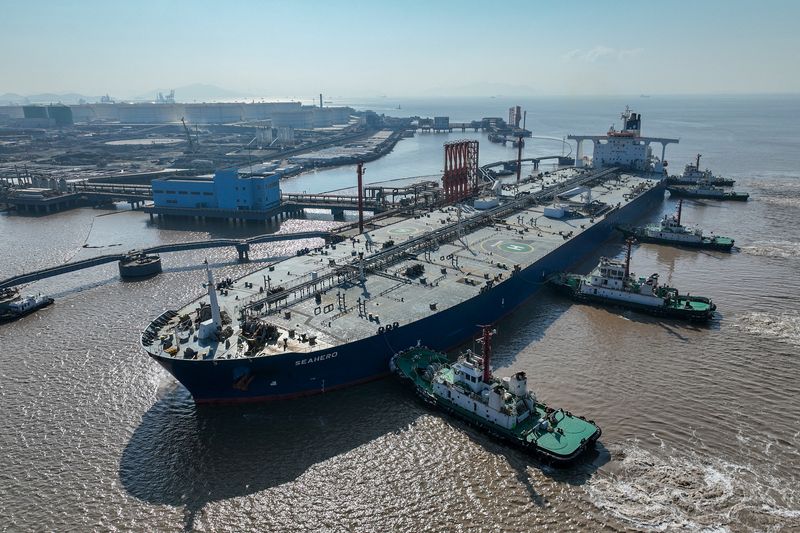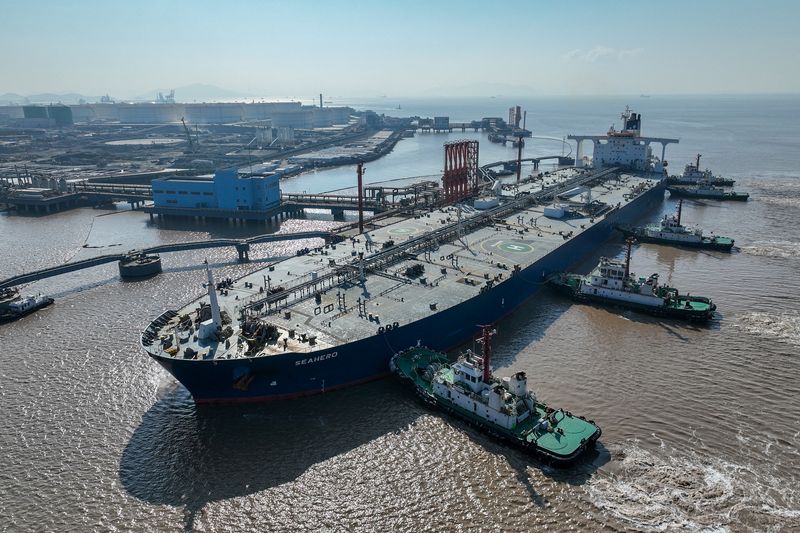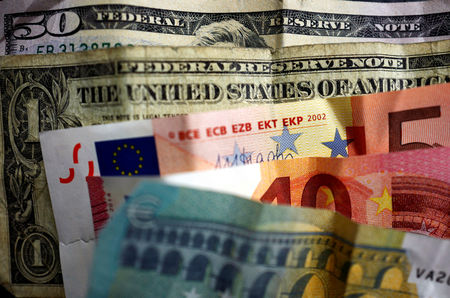
By Florence Tan
SINGAPORE (Reuters) – Oil prices edged up on Monday supported by upbeat factory activity in the world’s second largest oil consumer China and as Israel resumed attacks on Lebanon despite a ceasefire agreement, stoking tensions in the Middle East.
Brent crude futures climbed 8 cents, or 0.1%, to $71.92 a barrel by 0107 GMT while U.S. West Texas Intermediate crude was at $68.09 a barrel, up 9 cents, or 0.1%.
Prices rose after an official survey showed that China’s factory activity expanded modestly for a second straight month in November, suggesting a blitz of stimulus is finally trickling through just as Donald Trump ramps up his trade threats.
“China data is helping, but I think it is also coming on concerns the Israel-Lebanon ceasefire may not hold,” IG’s Sydney-based market analyst Tony Sycamore said.
A truce between Israel and Lebanon came into effect on Wednesday but both sides have accused each other of breaching the ceasefire.
The Lebanese Health Ministry said in a statement several people were wounded in two Israeli strikes in south Lebanon. Air strikes also intensified in Syria as President Bashar al-Assad vowed to crush insurgents who had swept into the city of Aleppo.
Last week, both benchmarks posted a weekly decline of more than 3%, on easing concerns over supply risks from the Israel-Hezbollah conflict and forecasts of surplus supply in 2025 even as OPEC+ is expected to extend output cuts.
The Organization of the Petroleum Exporting Countries and their allies, known as OPEC+, postponed its meeting to Dec. 5 and is discussing delaying its oil output hike due to start in January, OPEC+ sources told Reuters last week. The meeting this week will decide policy for the early months of 2025.
“The extension of output cuts would allow OPEC+ more time to assess the impact of Trump’s policy announcements with regards to tariffs and energy and also to see what China’s response will be,” Sycamore said.

Brent is expected to average $74.53 per barrel in 2025 as economic weakness in China clouds the demand picture and ample global supplies outweigh support from an expected delay to a planned OPEC+ output hike, a Reuters monthly oil price poll showed on Friday.
That is the seventh straight downward revision in the 2025 consensus for the global benchmark, which has averaged $80 per barrel so far in 2024.
This post is originally published on INVESTING.




